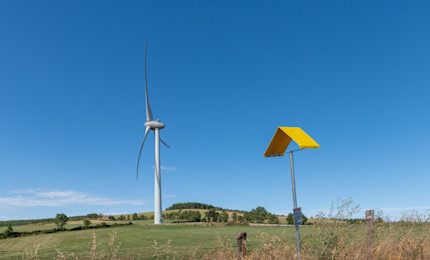Urgence gaz 0 800 028 800

CO2 capture, a lever for decarbonisation
CO2 is a greenhouse gas whose role in climate change is well established. Since the beginning of the industrial era, its concentration in the atmosphere has risen steadily, linked to the intensification of human activity, particularly industrial activity. Today, targets have been set to reduce greenhouse gas emissions at French, European and international levels. To support these objectives, CO2 capture, storage and recovery solutions are particularly promising.
What is CO2 capture?
The aim is to recover CO2 at its source of production, in industrial emissions. Three capture technologies are currently being studied:
"post-combustion" capture, the most widely used technique, consists of recovering the CO2 by washing the fumes emitted by combustion with a solvent;
pre-combustion capture involves transforming the fuel into a synthesis gas made up of water, hydrogen and carbon monoxide. This is converted into CO2 by introducing water vapour into the synthesis gas. The CO2 and hydrogen are then separated by a solvent, enabling them to be captured;
oxy-combustion capture requires the fuels to be burnt in the presence of pure oxygen instead of air, which results in fumes with a higher concentration of CO2 and therefore makes it easier to separate the CO2 from the water vapour.
However, there is no point in capturing the molecule if it cannot be transported, stored and/or used. It is therefore also important to develop suitable transport and storage infrastructures. This is part of a CCUS (Carbon Capture, Utilisation and Storage) process.
Why capture CO2?
France and Europe have set themselves the goal of achieving carbon neutrality by 2050, which means decarbonising industry. The introduction of CO2 capture, transport and storage solutions, alone or in conjunction with other systems, would appear to be one way of achieving this decarbonisation.
CCUS is an effective solution for eliminating residual CO2 emissions - those that cannot be reduced after all the energy-saving, energy-efficiency and renewable energy integration measures have been taken - particularly for certain heavy industries such as steelworks, iron and steelworks and cement works, for example. The CO2 is recovered at the source of emission, and transported to permanent storage sites or delivered to manufacturers producing fuels or synthetic chemicals. CCUS technologies are therefore particularly interesting for these industries, which are difficult to decarbonise.
CO2 capture: what next?
Once the CO2 has been extracted from the industrial flue gases, it must be transported:
Either by pipelines
Or by boat
Or by train or lorry
The captured CO2 is then transported to be stored underground or recycled.
Different types of structures are used for storage:
deep saline aquifers, reservoirs of unclean salt water located at great depths;
depleted hydrocarbon deposits.
The former offer significant storage potential, but they need to be studied further to gain a better understanding of their structure and their capacity to trap CO2 over the long term. The latter have already demonstrated their ability to store hydrocarbons for several million years. Today, we need to ensure that operating them has not compromised their airtightness.
Captured CO2 can also be considered as a resource to be exploited. For example, in combination with renewable hydrogen, it can be used to produce synthetic methane, thereby contributing to the development of multi-energy networks.
The CCUS sector: what's at stake?
The potential of CCUS is very real. The main challenge today is therefore to set up a truly dedicated industry, involving large-scale capture facilities as well as the massive development of transport networks, storage sites and industrial processes capable of recovering CO2.
Several projects are under study, such as the PYCASSO project, which involves developing shared infrastructures for the sustainable and secure transport and storage of CO2 in depleted oil and gas fields in the Pyrenean foothills.
As part of its call for expressions of interest launched in 2023, Teréga identified 125 expressions of interest and 61 projects or needs in the field of H2 and CO2 transport and storage, involving a wide range of players: industrialists who emit fossil CO2, manufacturers in the region's timber industry, e-fuel producers, port areas, etc. These surveys demonstrate the opportunities offered by CCUS infrastructure and the complementary nature of H2/CO2 networks to make the Nouvelle-Aquitaine and Occitanie regions models for decarbonising local industries and driving forces in the development of green energy production sectors.








